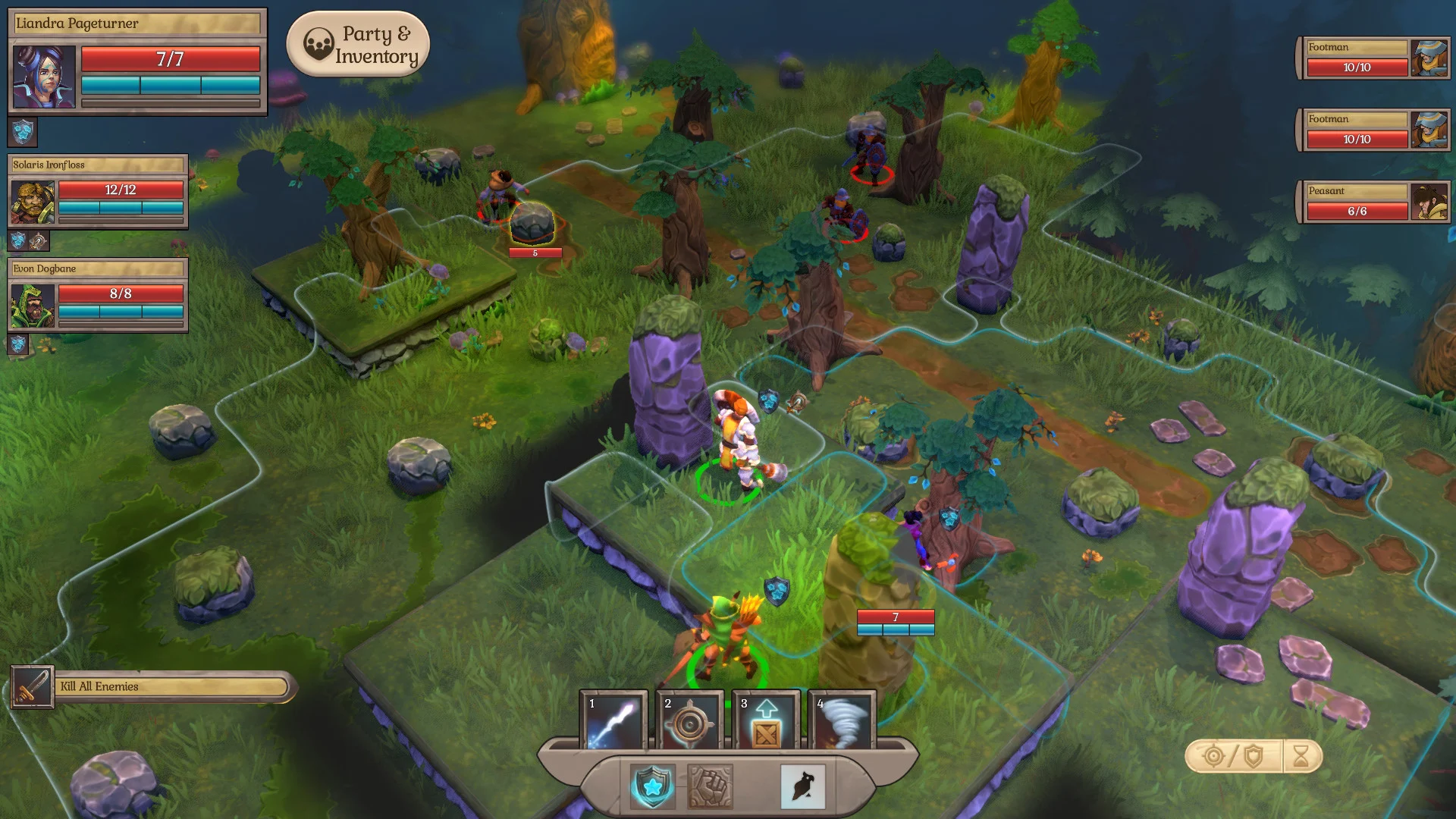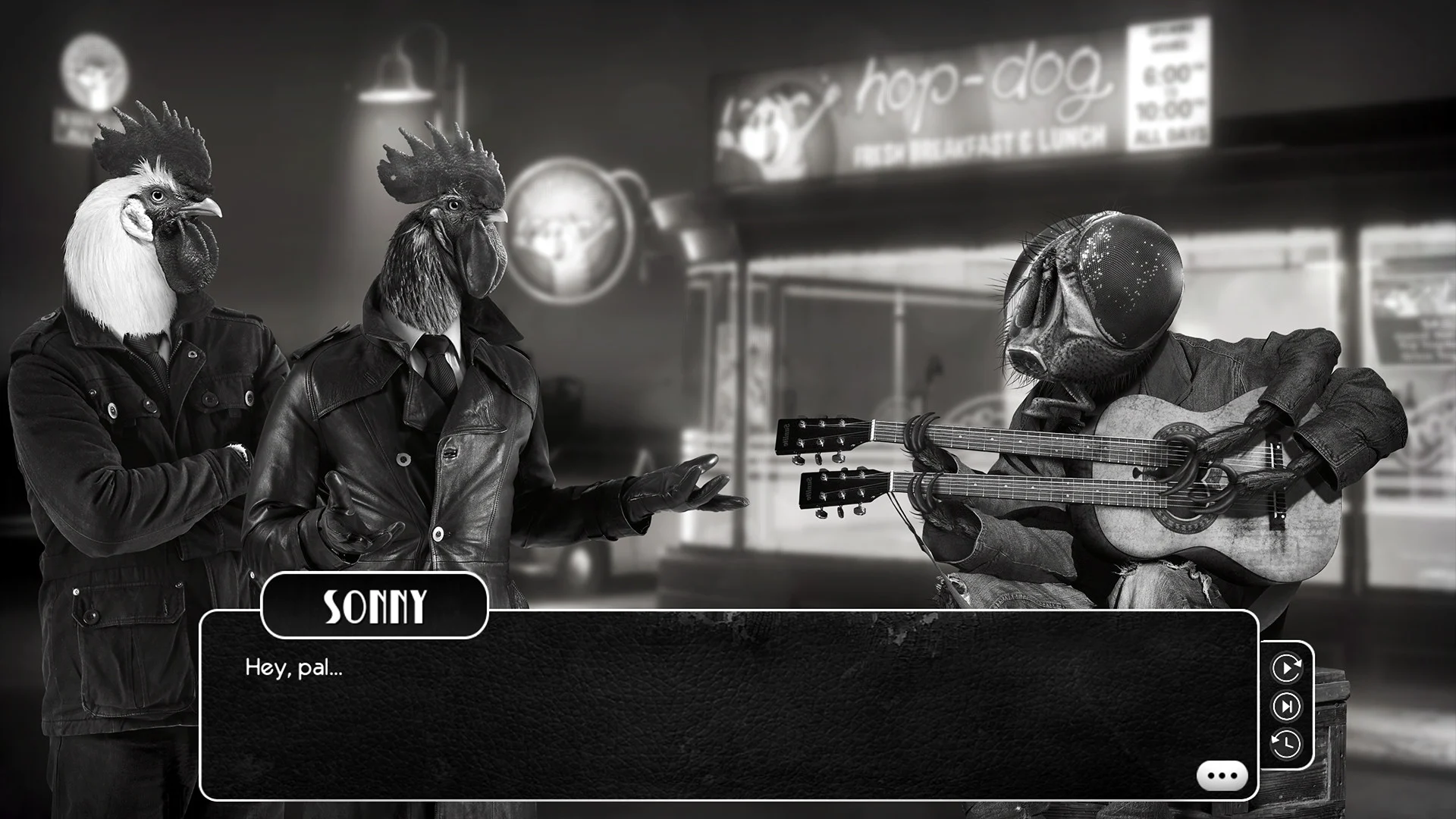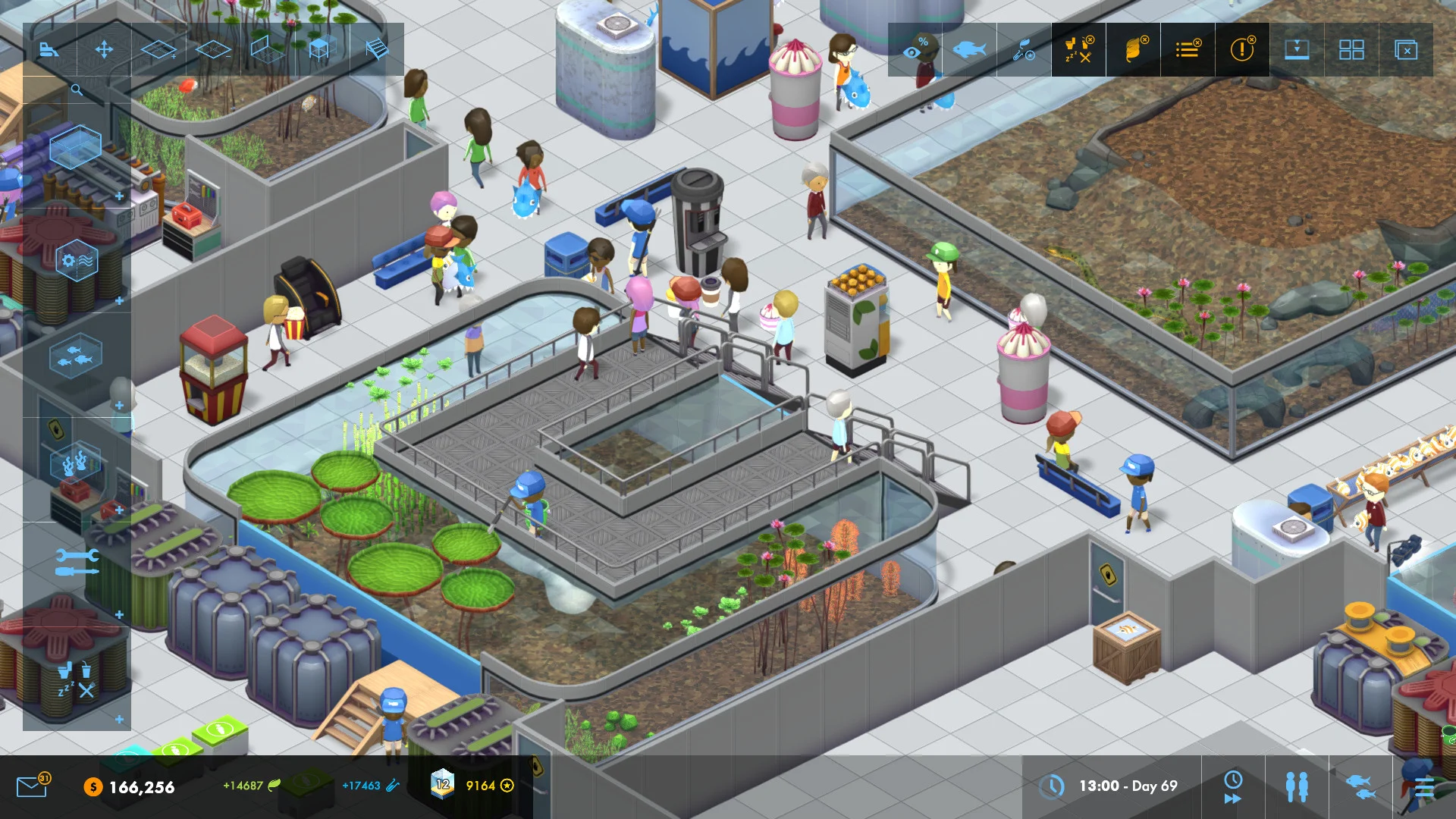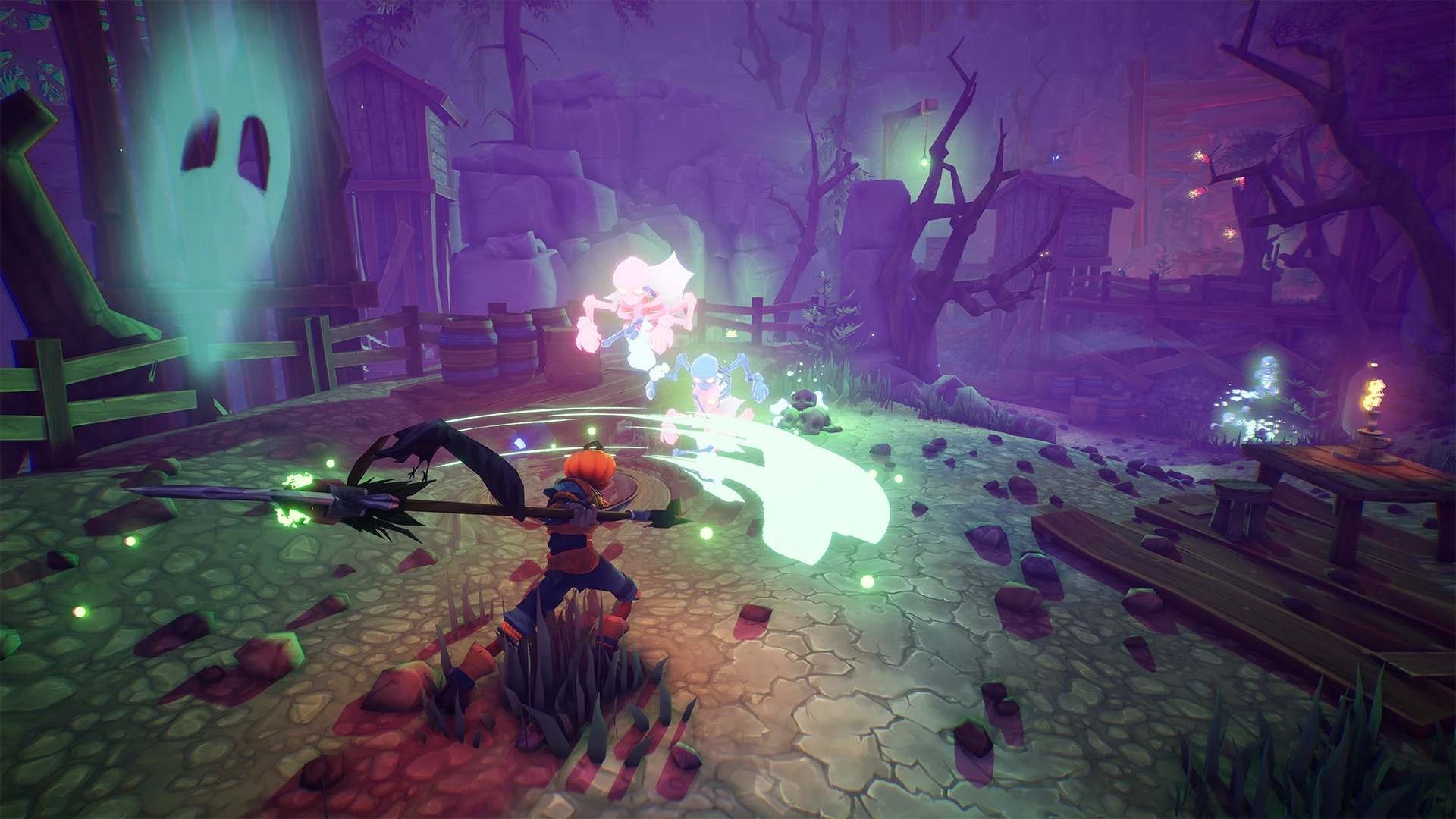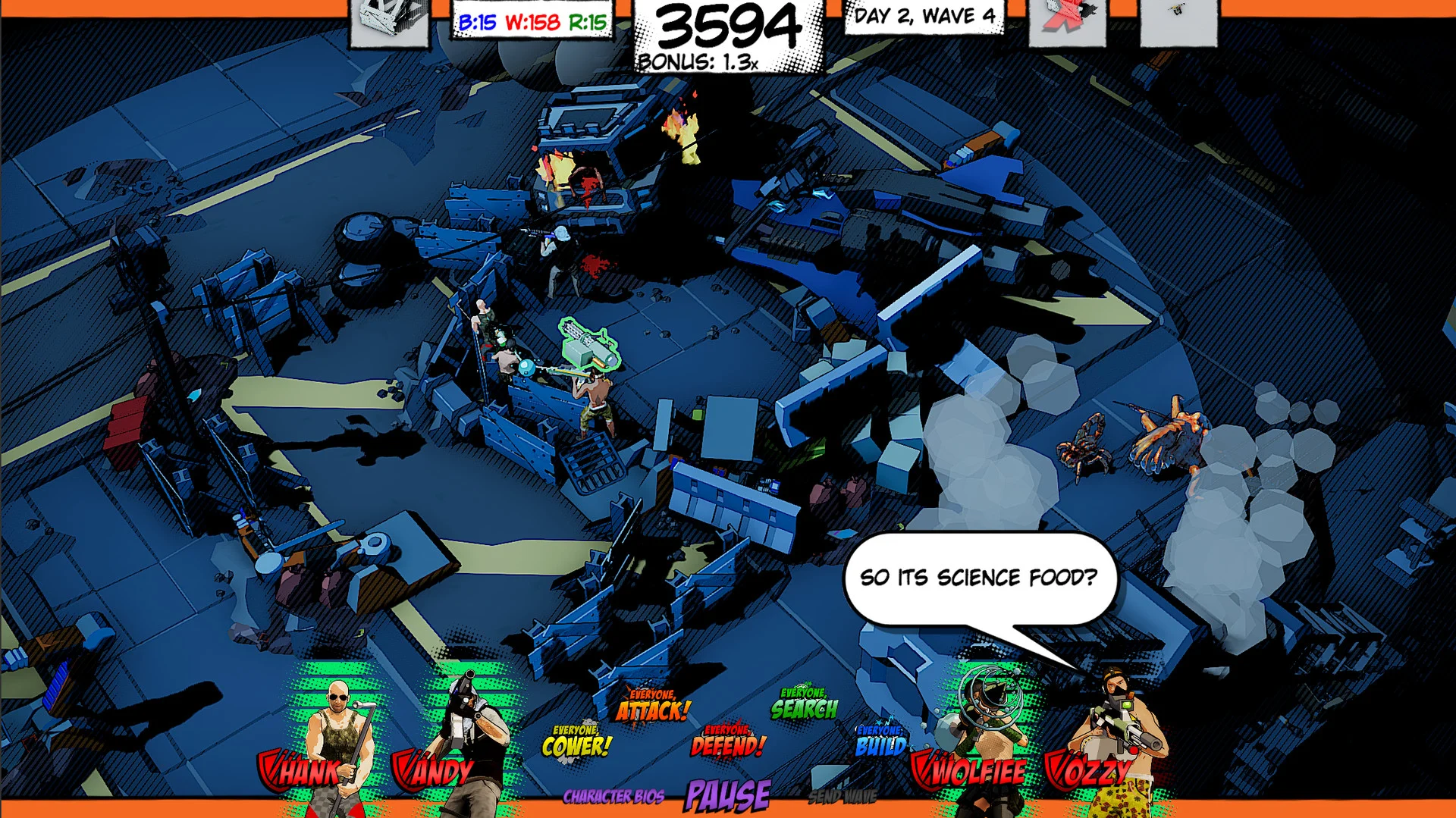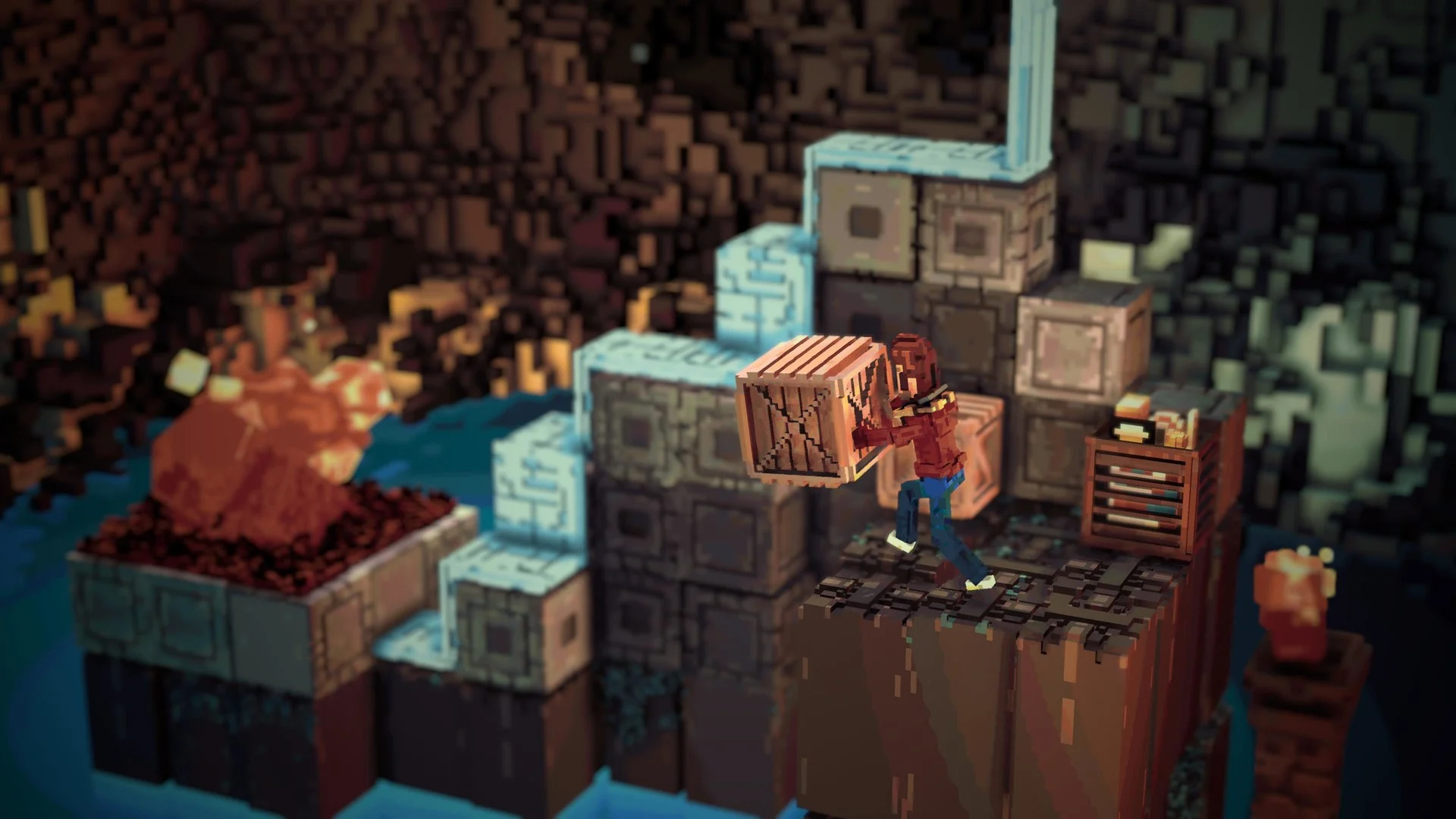Both created in the early 1990s the X-COM and Heroes of Might and Magic franchises have spanned decades and many games. While I am not familiar with Heroes of Might and Magic outside of its name, I am pretty familiar with the X-COM series. I have been a fan of turn based strategy games for quite some time. Tactically figuring out how to position your troops to attack and defend is fun and requires quite a bit of strategy to keep your troops alive. The reason that I am bringing up these two franchises is that today I am looking at Fort Triumph which is a game that tries to combine mechanics from the two franchises. After launching as a Kickstarter and spending two years in Early Access Fort Triumph finally left Early Access late last week. While I like turn based strategy games I was a little cautious about Fort Triumph as there are quite a few indie games created for this genre and few bring something new to the genre. When I heard that Fort Triumph added mostly destructible environments and a physics mechanic though I was intrigued. Fort Triumph combines mechanics from X-COM and Heroes of Might and Magic along with an interesting physics mechanic to create a unique and fun gameplay experience.
We at Geeky Hobbies would like to thank CookieByte Entertainment, and All in! Games for the review copy of Fort Triumph used for this review. Other than receiving a free copy of the game to review, we at Geeky Hobbies received no other compensation for this review. Receiving the review copy for free had no impact on the content of this review or the final score.
As I mentioned at the beginning of this review Fort Triumph is a game that feels like a combination of a number of other genres. The most obvious in my opinion is the turn based strategy genre (X-COM for example). For those not familiar with the genre you are given a group of units to control. Battles take place on a grid battlefield where each unit is given a number of action points. These action points can be used to move around the grid to attack enemy units or get behind cover. The action points may also be used to launch attacks and other special abilities. Once all of your units have taken their actions your opponent’s units get a chance to attack. The goal is to eliminate all of the enemy units in order to finish the battle.
In the game there are four different classes of units with their own strengths and weaknesses. The four classes include a paladin, a barbarian, a mage, and an archer. The paladin and barbarian are mostly melee units while the mage and archer are mostly ranged units. Each unit begins with a number of attacks exclusive to their class. As you defeat enemies each unit will gain experience allowing them to unlock additional abilities or upgrade abilities already unlocked. When choosing a new ability you will be presented with three options. Some will be common for that class while others are rare and some can even be from the other classes. Each unit also have inventory slots which can be used to carry various equipment or potions.
Along with this X-COM mechanic is a city building/exploration mechanic. While I have never played a game from the series this aspect seems very similar to the same mechanic in the Heroes of Might and Magic series. You will start by controlling a city. In this city you will be able to build various buildings. These buildings will give benefits to your city allowing it to generate more resources or give your heroes various benefits. You can also use your city to recruit new heroes to join your group. These heroes can form another group to help you explore more or defend a location. Outside of your city you can explore the surrounding area. Your units can move a given amount of spaces per day. In the world there are various locations to explore and enemies to fight. After defeating an enemy you will be able to pick up rewards from the world map which either give you resources or items that your units can use. The ultimate objective is to capture your opponent’s city.
At this point Fort Triumph might sound like your typical turn based strategy game. In a lot of ways it is. Anyone familiar with the X-COM or the Heroes of Might and Magic series will already have a good idea of what to expect from the game. I am not familiar with Heroes of Might and Magic enough to know how similar the city building and exploration mechanics are, but they seem similar. The basics of the combat are pretty much the same as X-COM and other similar turn based strategy games. Fort Triumph does a good job implementing these mechanics as the main gameplay is quite fun. I wouldn’t consider them to be highly original though as they don’t take the gameplay in any particularly new areas. If you are familiar with these genres of games you should already have a good idea of whether you will enjoy the game. If you like these type of games you likely will enjoy Fort Triumph, but the opposite will likely hold true as well.
While the main mechanics don’t revolutionize the genre there is one unique mechanic in the game that is quite original. For the most part the combat is similar to pretty much every other turn based strategy game. Get close enough to enemies to attack or hide behind cover. The one area that is different though is that the game includes physics. A large majority of the items in the environment are destructible. This is combined with the fact that each unit has access to a number of different physics moves. These physics moves mostly involve pushing or pulling objects or other characters. This allows you to push/pull enemies into various objects or even other enemies. This will cause damage as well as stun the enemy unit preventing them from attacking on their next turn.
At first this might seem like kind of a gimmick as that is exactly what I thought of it at first. In my first couple of battles I approached them like your typical turn based strategy game. This lead to poor results as I lost units or suffered considerably more damage than I should have. The problem is that you are regularly outnumbered in most battles. If you just attack the enemies in a traditional way you likely will struggle as you won’t be able to kill the enemies quick enough. The key to the game is using this physics mechanic to your benefit. Using the physics mechanic is important for a couple reasons. First stunning enemies is key. Each enemy you stun eliminates an enemy that will attack you on your next turn. If you can stun all of the enemies you don’t have to worry about being attacked on your enemy’s next turn. In addition smart use of the physics mechanic can potentially allow you to hit multiple enemies at the same time.
Let me give you an example. The melee units in the game have a kick ability that allows them to kick an object or enemy in one of the neighboring spaces. At the beginning of each round I would analyze the battlefield to see what opportunities are available to use the physics mechanic. Say there is an enemy behind a stone pillar or tree. You could use one of your melee units to kick down the pillar/tree making it fall down on the enemy unit. This will stun the enemy unit while also dealing damage. In another situation there may be an enemy unit with several other units behind it in a straight line. You can kick this unit which will push it back a couple spaces. This will hit the next unit pushing it back as well. This can create a chain reaction where you ultimately end up hitting several units with just one kick. This will stun all of the units while also dealing damage to them.
I was a little skeptical of this mechanic at first, but it really started growing on me. To do well in the game you basically have to use it as you will struggle just using typical turn based strategy tactics. Once you get a hang of it it is also quite fun. In some ways it kind of feels like you are playing a game of pool with the enemies. You need to line up your shots in a way where they hit other enemy units and objects. A nicely lined up shot can deal a lot of damage and stun multiple enemies at the same time. Once you thin the enemies’ numbers some you can then proceed to using traditional turn based strategy maneuvers. While it seems a little unorthodox at first, this mechanic actually works really well with the other mechanics. It is quite satisfying lining up the perfect shot dealing a bunch of carnage to your enemies.
It may seem optional at first, but this physics mechanic really isn’t. I am guessing it is possible to succeed without using it, but the game will be considerably harder and you will lose a lot more units. For this reason your enjoyment of the physics mechanic is going to really impact your enjoyment of the game. While I was leery of it at first I grew to love it. It doesn’t drastically change the genre, but it brings something unique to the table which keeps things fresh. If the physics system doesn’t sound all that interesting though you may be a little disappointed with the game.
Fort Triumph basically has two different types of game modes. The game has a skirmish mode and the campaign. In both modes you will control your city as well as a group of heroes. Both modes allow you to explore and fight various creatures in order to upgrade your heroes. The main difference between the two modes is that the campaign has an overarching story as well as some story missions. In the campaign you need to use your characters in order to beat a number of different story missions while exploring and building up your cities to increase the power of your heroes. The story missions aren’t much different than your typical battles except they are usually longer and feature more enemies. Otherwise the campaign is about betrayal and the heroes questioning their current thoughts about the world. While the story features some tropes from your typical fantasy story, in a lot of ways the story defies your typical fantasy story. This is both a good and a bad thing. On the positive side I give the story credit as it tries some new things with some of them actually being pretty funny. At times though the story gets pretty bad where it goes on for far too long and some of the jokes are just bad. I still enjoyed the story, but I can definitely see some people not liking it.
I had fun with Fort Triumph but it does have a couple issues.
My first problem with Fort Triumph deals with the fact that all of the characters in the game suffer from permadeath. This is mandatory in the campaign, but you can turn it off in skirmish mode where you can pay resources to revive dead heroes. Basically with permadeath once a character dies they are never coming back. Their experience is lost forever with no way of recouping it. In one way I can understand this decision as thematically it makes no sense for character to come back from the dead. It also forces you to carefully plan out your attacks so you don’t put any unit in too much danger. Mostly due to the next issue I will discuss, I feel like it is a little unfair. One of your characters could get killed and it wasn’t really even your fault. In order to recoup that lost experience you will then have to fight a bunch of battles to train up a new unit to replace the unit that died. Otherwise your team will be way under powered which will likely lead to even more of your heroes dying. Fans of permadeath should have no problem with this. The good news is those like me who hate permadeath can easily to reload a past save to avoid losing units and having to grind to power up a new unit.
The main reason that I don’t like the permadeath mechanic is the fact that the game also utilizes quite a bit of procedural generation. While levels share similar details it feels like elements of the levels are randomized along with where your units and enemy units are placed. This ends up adding quite a bit of luck to the game. There will be levels where you get a good spawn where you are in an advantageous position. Then there will be times where you are put in a bad spot before the battle even begins. Some of these times it will be hard to save all of your heroes due to how the level was spawned. I don’t think it is particularly fair that you may lose some of your heroes just because you got a bad spawn. I like the variety that the procedural generation brings to the game. The problem is that there will be times when your heroes will die due to no fault of your own.
The final problem has to deal with when you change between chapters in the campaign. Based on the game’s achievements it appears that the campaign features three chapters even though I haven’t quite finished the campaign yet. Each chapter features a number of story missions as well as a new map to explore. I don’t have a problem with the game being broken down into chapters as it allows you to explore new areas. The problem is that each time you start a new chapter you lose almost all of your progress. When you head to a new chapter you are limited to what you can bring with you. You can only bring a number of your heroes, items and potions that you have collected, as well as the upgrades you have unlocked through your city. You are mostly left with just your best heroes. The problem with this is it really hurts the exploration mechanic of the game. What is the point of exploring to find all of the equipment as well as building up your city if you are just going to most of it once you move to the next chapter. This feels like a wasted opportunity as the exploration mechanic could have been really fun.
As for Fort Triumph’s length it is going to somewhat depend on what type of player you are. The game has two different modes which are mostly the same. As I stated earlier the campaign appears to only feature three chapters. Each of these chapters feature a number of story missions to complete. Otherwise each chapter will depend on how much time you take exploring and upgrading your characters. If you do a lot of exploring each chapter can take quite a bit of time. You likely will have to take at least some time upgrading your characters, but if you can still successfully finish a mission without spending much time upgrading your characters the chapters can move pretty quickly. After you finish the campaign you can play the skirmish mode which is basically the same without the overall story. I can see some people barely touching the skirmish mode after completing the campaign while others could spend a lot of time with it. If you are a big fan of the gameplay I could see you easily getting your money out of the game as you should get a lot of time out of it. If you just play the campaign mode though the game may be a little short for the game’s $25 retail price.
When you first start playing Fort Triumph it feels exactly like what you would get if you combined a game like X-COM with the Heroes of Might and Magic franchise. It is obvious that the game took inspiration from both genres as it shares a lot of mechanics with both genres. The game does a good job implementing both genres creating a fun gameplay experience for fans of turn based strategy games. The big twist in the game is the addition of a physics system. In addition to your typical battle options you also have the option of pushing and pulling enemy units around the battlefield to deal damage and stun them. This might seem like a gimmick at first, but it is key in the game. In order to do well in Fort Triumph you need to use this mechanic in order to deal damage to multiple units at a time as well as stunning them. The mechanic may not be for everyone, but I thought it was quite clever and it was fun trying to figure out how to utilize these attacks to deal the maximum amount of damage. I enjoyed playing Fort Triumph even though I was not a huge fan of the permadeath feature or the fact that since the levels are procedurally generated you may get put into a bad situation. There is also the fact that much of your progress is reset between each chapter of the campaign which hurts your desire to explore.
My recommendation for Fort Triumph comes down to two things. First what is your opinion on games like the X-COM and the Heroes of Might and Magic series. If you aren’t much of a fan of these type of turn based strategy games I don’t see Fort Triumph being for you. The other consideration comes down to whether you think you will like the physics system. If you think the physics system is too gimmicky you probably won’t like Fort Triumph. If the combination of these mechanics sounds interesting though I think you should really enjoy Fort Triumph and should consider picking it up.
Buy Fort Triumph online: Steam

